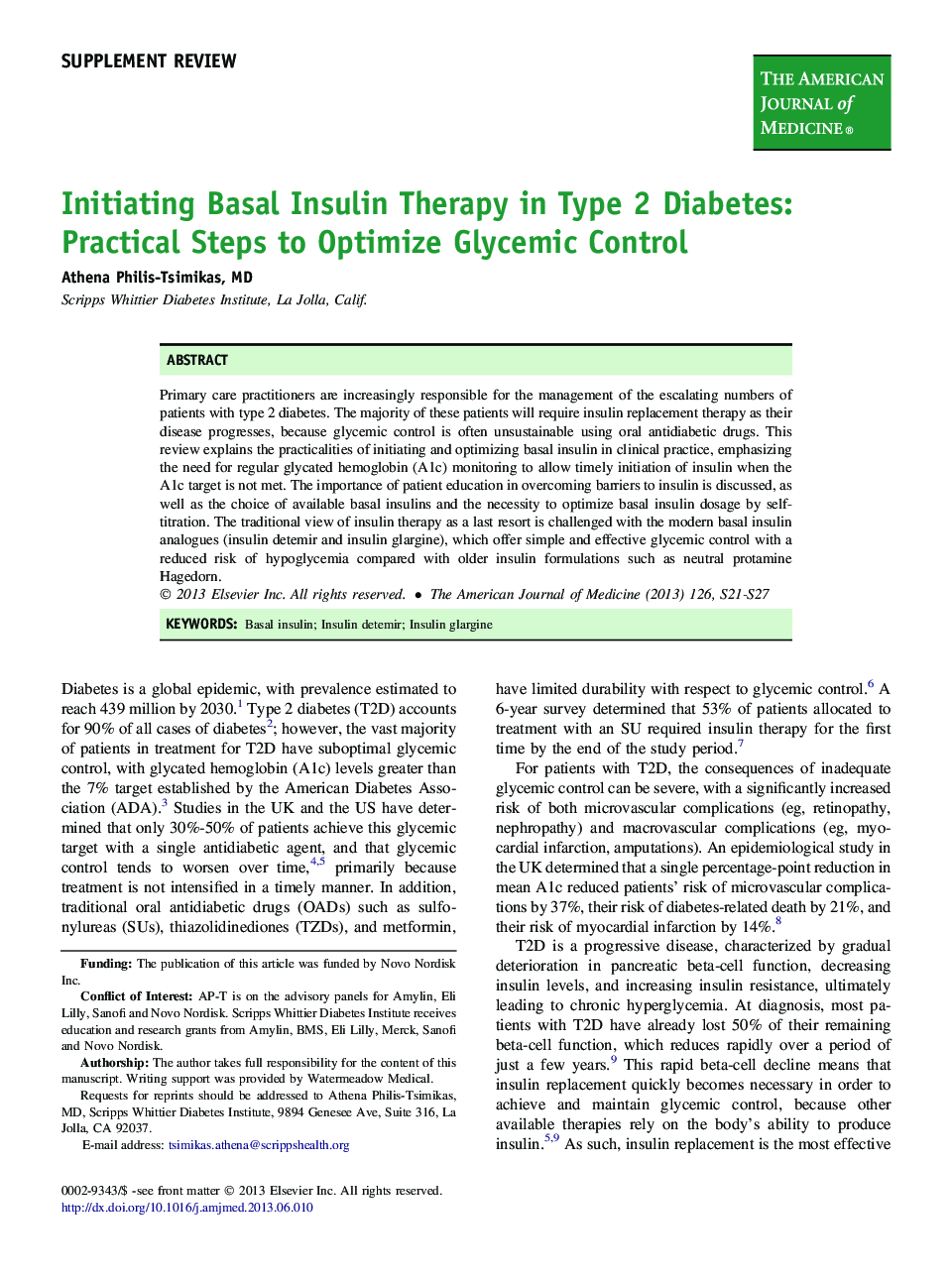| کد مقاله | کد نشریه | سال انتشار | مقاله انگلیسی | نسخه تمام متن |
|---|---|---|---|---|
| 2723010 | 1566148 | 2013 | 7 صفحه PDF | دانلود رایگان |

Primary care practitioners are increasingly responsible for the management of the escalating numbers of patients with type 2 diabetes. The majority of these patients will require insulin replacement therapy as their disease progresses, because glycemic control is often unsustainable using oral antidiabetic drugs. This review explains the practicalities of initiating and optimizing basal insulin in clinical practice, emphasizing the need for regular glycated hemoglobin (A1c) monitoring to allow timely initiation of insulin when the A1c target is not met. The importance of patient education in overcoming barriers to insulin is discussed, as well as the choice of available basal insulins and the necessity to optimize basal insulin dosage by self-titration. The traditional view of insulin therapy as a last resort is challenged with the modern basal insulin analogues (insulin detemir and insulin glargine), which offer simple and effective glycemic control with a reduced risk of hypoglycemia compared with older insulin formulations such as neutral protamine Hagedorn.
Journal: The American Journal of Medicine - Volume 126, Issue 9, Supplement 1, September 2013, Pages S21–S27